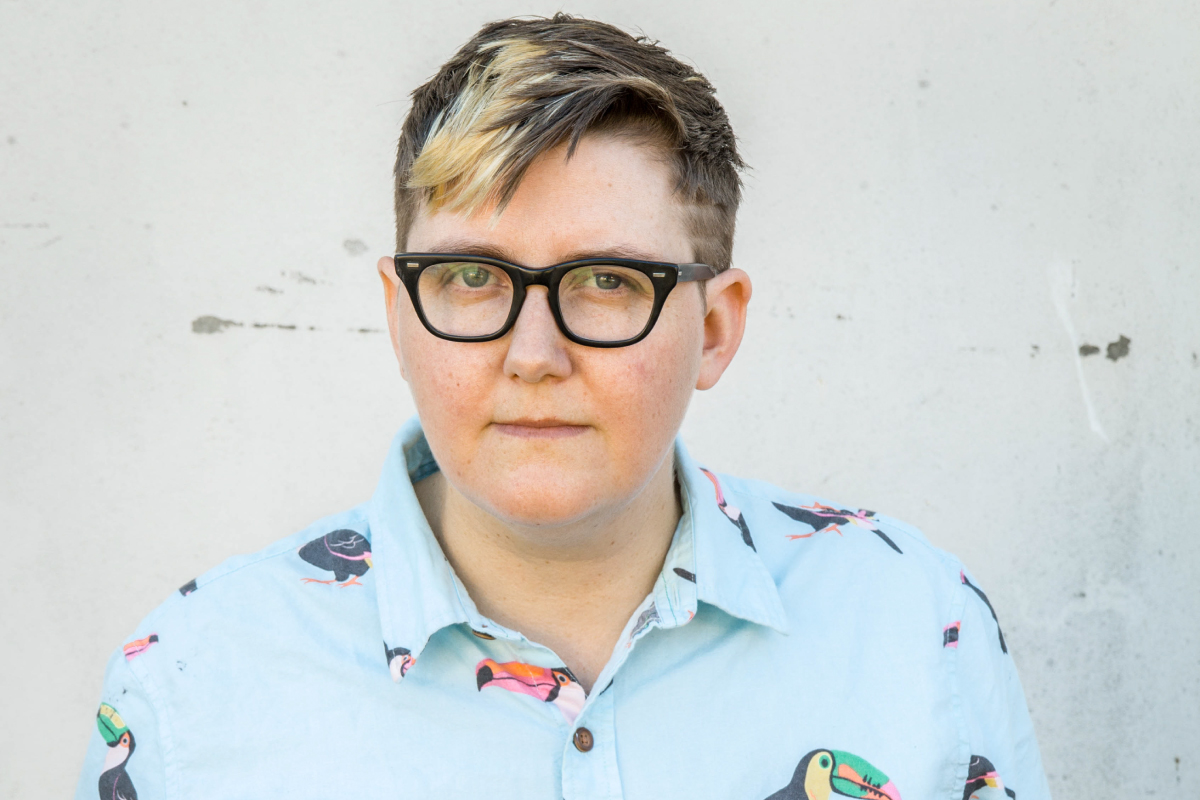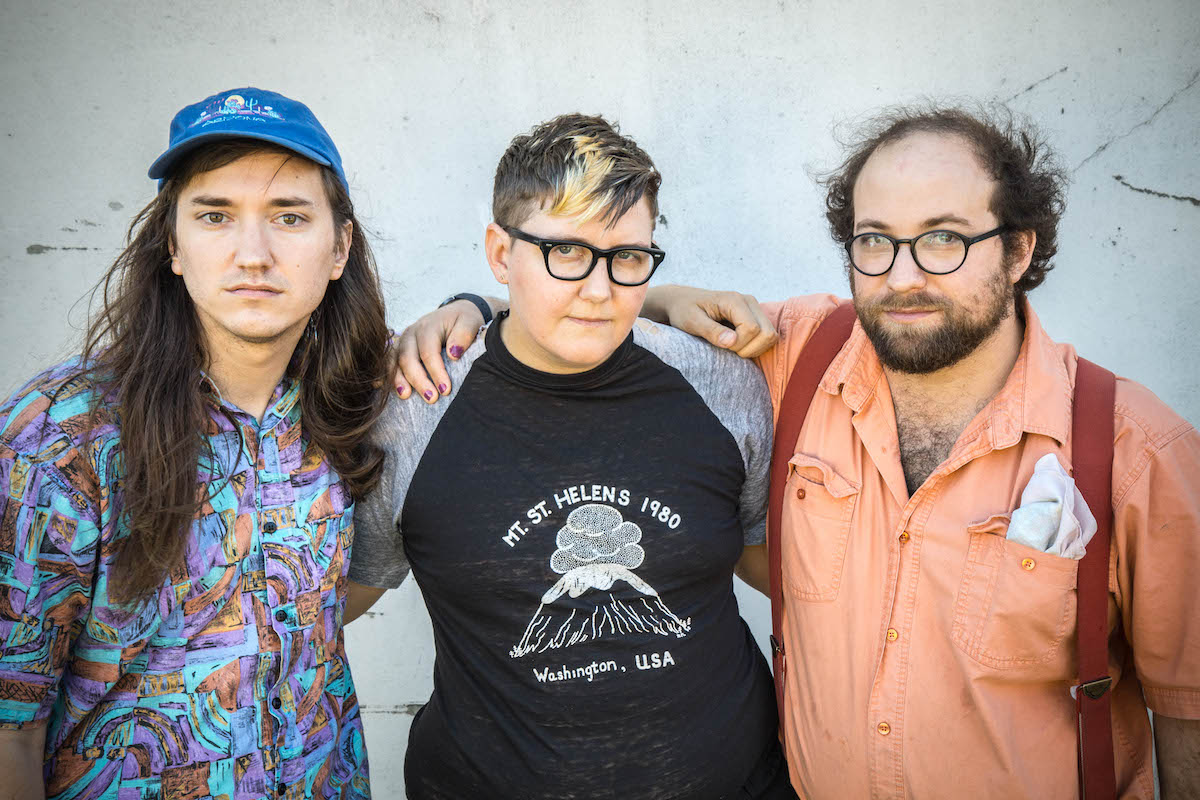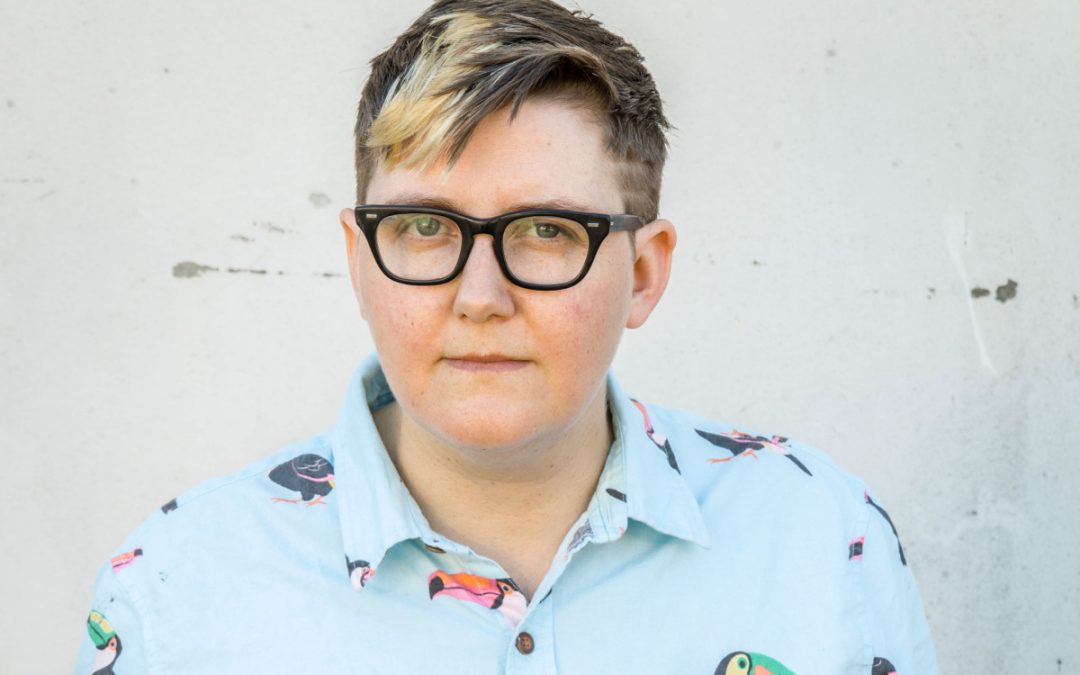
Clyde Petersen. Photo by Joseph P. Traina.
With star-studded casts, poignant subject matter, and diverse perspectives, TWIST: Seattle Queer Film Festival is set to be especially profound this year. But one film is already a standout for the 21st annual lineup: Torrey Pines, the festival’s opening night film, screening Thursday 10/13 at SIFF Cinema Egyptian.
I had the pleasure of previewing the remarkable film and interviewing its creator, Clyde Petersen, an easygoing Ballard local, brilliant cinematic visionary, and out trans filmmaker.
Torrey Pines tells a very complicated story in an unusual way, depicting you wrestling with sexuality and gender identity while on a cross-country road trip with your mentally ill mother, who lost custody of you and later kidnapped you from your chain-smoking grandmother. What made you decide to turn your tumultuous personal history into a film?
I have been making short animated films for the last 14 years, and I went to see a movie that was called Persistence of Vision about this guy who was trying to make his animation masterpiece. Some of my friends were talking about, “Would you guys ever make a feature film?” And it suddenly clicked in my brain, “I could make a feature film. Why not?” The story I know the most intimately is my own, so it felt pretty natural to say this is a great way to tell this story and make a feature for the first time. In 2007 I wrote a song with Kimya Dawson called “Torrey Pines.” We took that song on tour for many years playing it for her crowd and people responded to it very strongly. So that was the beginning of telling this story. When it came to deciding what feature film to make, the seed was already there.
While it looks simplistic, the artwork was quite striking throughout this stop-animation film. Who created the character cutouts and backdrops, and how did they do it?
Myself and my co-animator whose name is Chris Looney worked with 7 interns over the course of the last 2 years to make all of those objects. We had a few guidelines for building the sets, and everything is hand-painted and handcrafted. We just had a ton of white paper and water-color paints. We also used tempera paint—it’s an acrylic paint made for children. It’s very inexpensive and you buy it by the gallon. Almost the entire film is shot in camera, but once in a while there’s a [computer animated] After Effect situation.
Audiences may see a poster advertising the film and assume it’s childish, but the cinematography and art direction are quite sophisticated and executed very professionally. Who were the key visionaries who turned a two-dimensional medium into a three-dimensional film?
The only people working on this film were me and Chris and our 7 interns, so there were just 2 of us animating and that was Chris and I. Pretty simple. I’m self-taught, very inspired by the “Peewee’s Playhouse” animation. They’re so beautiful. I also watched a lot of MTV when it first started, and they used to hire a ton of animators to do little segments, so I feel lucky to have grown up in that time period when television was full of animation. I studied documentary filmmaking in college and then I went on tour with a bunch of bands for 10 years, and finally got back into filmmaking.
The only discernible English spoken in the film is the word “Butts,” with the rest of the characters’ speech uttered as gibberish. Was there ever a chance of scripting out actual dialogue, or were the characters’ conversations always going to be simply implied?
It was designed to be a visually told story. I was learning American Sign Language for a couple of years, and when I first set out to work on the film, I was very interested in working on a story that could cross language barriers, so I could take the film around the world without a subtitle situation. I wanted to make a movie that was accessible to more than just an American audience, or just a hearing audience.
And while Torrey Pines is visually enticing, the music is beautiful too. Chris Walla produced a soundtrack that brings a heartfelt severity to what some might otherwise assume is a whimsical animated feature. What was the decision process behind who would write the music, perform it, and what would make the final cut?
The music was primarily written by Your Heart Breaks, my band. We took songs from our discography throughout the years and made instrumental versions where it seemed to suit the film. Chris Walla produced the music and added some wonderful tracks to the film, along with the band Earth, Lori Goldston, and Kimya Dawson. I specifically wanted Chris to make the soundtrack because his album “Loops” is very beautiful and in line with the intention of the animation in Torrey Pines.
How long did filming take, from painting that first backdrop to editing the final scene?
It took a year of pre-production, then 2 years of production, and we finished this July in 2016. Preproduction included storyboarding, sorting out all the scenes. That time was spent figuring out the boundaries of the art, scale, all that stuff. Then in production, one of us would always be animating while the other one was working with the interns to build sets and puppets and prepare for the next scene. There’s no script for the movie because there’s no dialogue, so our story boards were on notecards and we just did it one note card at a time.
What made you choose to do stop-animation to tell this story rather than live action?
I just enjoy sitting quietly with others who enjoy sitting quietly while working. It’s my preference for filmmaking. I have made some live action things too, and I probably will in the future. It was the most reasonable way to tell a story with so many fantasy scenes.
For your next stop-animation film, is there anything you’d do differently the next time around?
Making Torrey Pines was a really big learning curve, and my next film I think is only going to have 6 characters in it total, and like 4 sets. It’s going to be a really different situation.
Do you already know what that film is going to be?
(laughing) I do but I can’t tell you because it’s a secret.
So mysterious! Is a live action film in your near future?
I am super interested in documentary filmmaking. That’s what I studied in college, and I’ve made several short documentaries. There is a topic of study I’m interested in making a documentary about, so I’m going to try to get that started next year.
No rest for the wicked, eh?
I’m terrified of dying! I just want to work forever!

Zach Burba, Clyde Petersen, and Jacob Jaffe. Photo by Joseph P. Traina.
What age is young Clyde in the film?
12 years old. My parents had joint custody but my dad was going to school at UW in Seattle. I was living with my mom in San Diego, and my grandma also lived in San Diego. She would pick me up after school while my mom was working. The year the film took place was the culmination of things going wild, going on that road trip, then going to live with my dad in Seattle. So it was 1992, 1993.
That’s a lot of life for a 12-year-old to live in one year.
I feel like I’ve lived a lot of lives.
There’s one scene in the movie in which young Clyde sees their mother naked and starts to imagine themselves as an adult female, becoming a baby-making factory and lactating everywhere. Was this a particular fear of yours at that age?
I definitely had puberty fear really hard because I was very much a tomboy at school, and did not fit in with the 12-year-old girls of San Diego. I was very shy, very nerdy, and not ready for the world of boobs or kissing that was coming toward me at the speed of a freight train. That scene was definitely a bit exaggerated, but Chris Looney and I were trying to create this scene that encapsulates this fucking puberty fear where you don’t have any information but you know something’s coming toward you, and you’re like, “What the fuck’s about to happen?” You can see signs of it all over the school playground, but you’re like, “I don’t know what’s happening.”
In Torrey Pines, we see you exploring your sexuality and discovering your gender identity. What was the process like for you, acknowledging your orientation and coming out as trans?
I didn’t come out as Trans until I was fucking 24 or something, but I was definitely queer in high school. It was pretty simple when I was a kid: “I fucking don’t want to wear dresses and I feel like a dude.” Those were my bottom line struggles with the world. I think I just didn’t have any framework for it—no internet to explore, and I couldn’t find people like me at school, even though years later I found out that many of my friends were gay, but I had left town and didn’t know. One of my friends called me up and told me all those people were gay, and they all dated each other. We all found each other but we didn’t know [at the time]. We were all in choir—we should have known.
At 24, I was touring with the Sex Workers Art Show, an organization of artists who were sex workers. I was the roadie for that tour for several years. That was a good, safe bubble to think about gender, and came out on those tours. Came home and came out again.
Did you come out to Mom?
No, we’re not in contact. We don’t chat. But my dad knows, he’s rad. He’s a character in the film, and he’ll be doing some voiceover work at the premiere.
At the end of the film, it seems you went to live with your father after your mother was arrested for kidnapping you. Was this a good thing for young Clyde?
Yeah, it was really confusing and kind of scary at the time, but only because my mom had told me my dad was Satan. She had projected some images of my father to me that were absolutely not true. But it worked out great, grew up in Seattle with my dad. He’s awesome.
Did young Clyde always want to be a filmmaker?
Yeah, I think so. I’m very interested in documenting things in general. Whether it’s drawing comics or making films or writing songs, I’m like a nonconsensual historian: whether things want to be recorded or not, they are forced to be told through my lens. I’m just interested in documenting things and always have been. The format changes from time to time and that’s the root of the problem—the unending drive to create things.
What’s next for you?
The next thing for us is to take the film on tour the rest of this year, and to Europe next year, and do a film festival run. That’s pretty much what’s happening in my life—organizing things—I bought a minivan. I’m interested in making graphic novels too. I wanted to make one about the Sex Worker Art tours, and I started doing that already. I made a 4-foot by 5-foot drawing about the sex workers there. I think I’ll do more of those drawings and make a book over 3 years. I have a piece hanging at the Paul Allen gallery Pivot, part of the Neddy show. I actually won the Neddy award—it’s fucking crazy!
Check out the film’s trailer and purchase your tickets for the TWIST screening of Torrey Pines here. If you can’t make opening night on October 13, you can catch the encore screening of Torrey Pines on Oct 22.
[wc_spacing size=”40px”]
[wc_divider style=”solid” line=”single” margin_top=”” margin_bottom=””]


You must be logged in to post a comment.